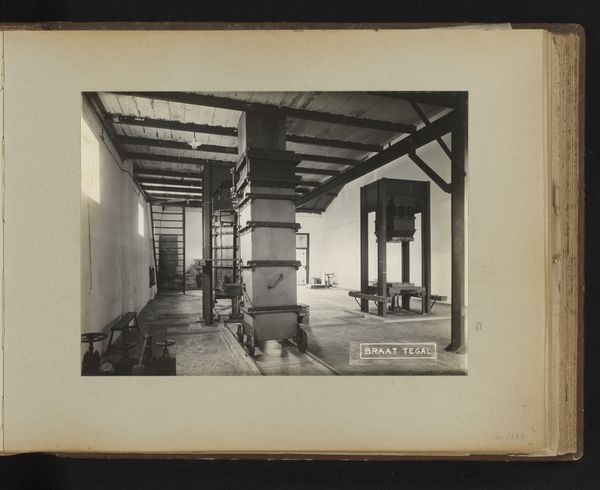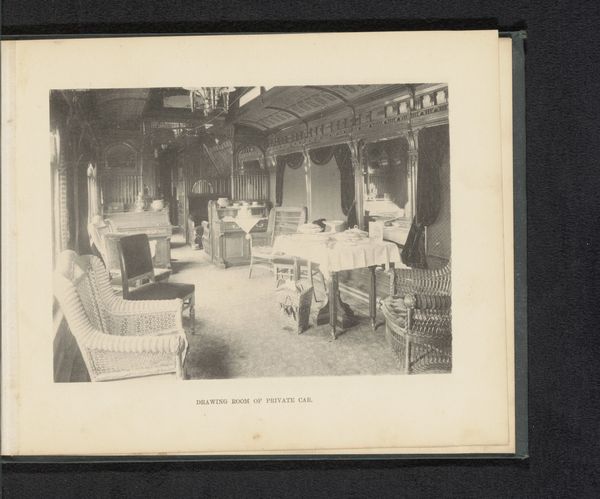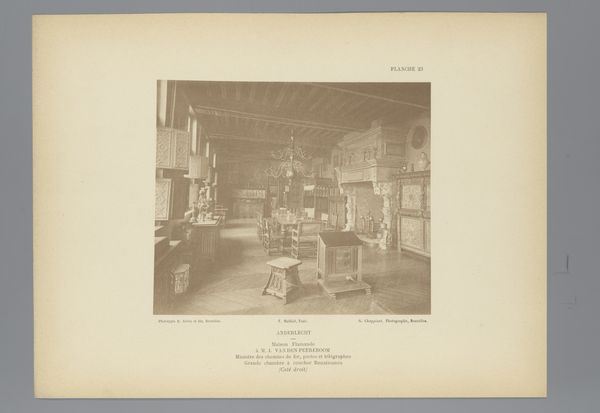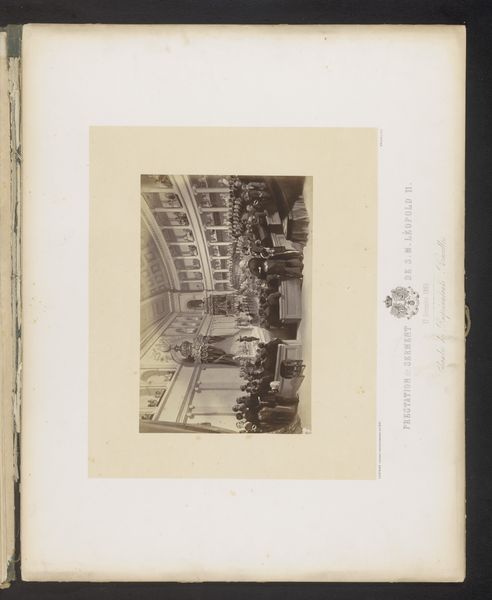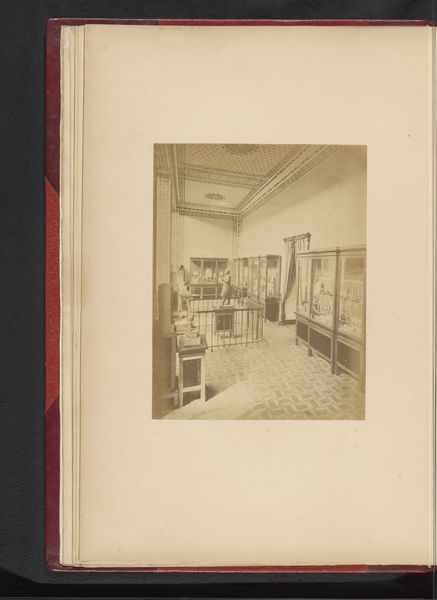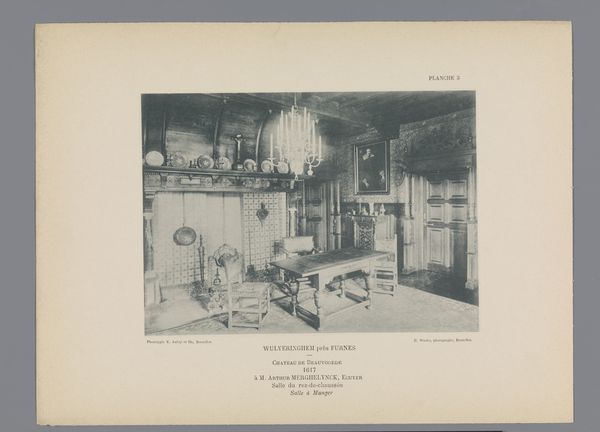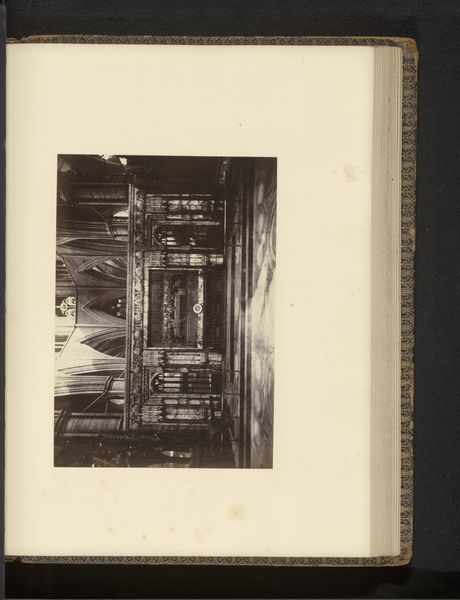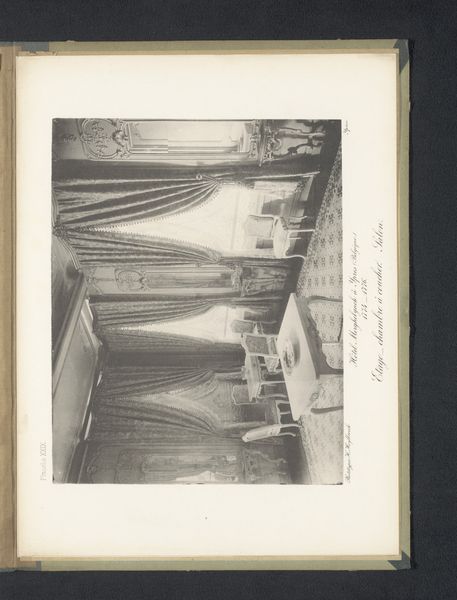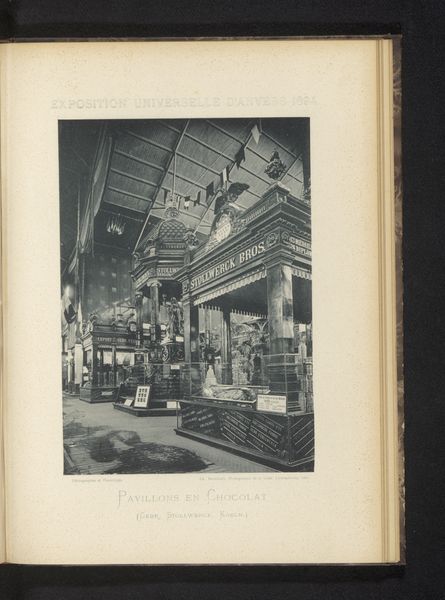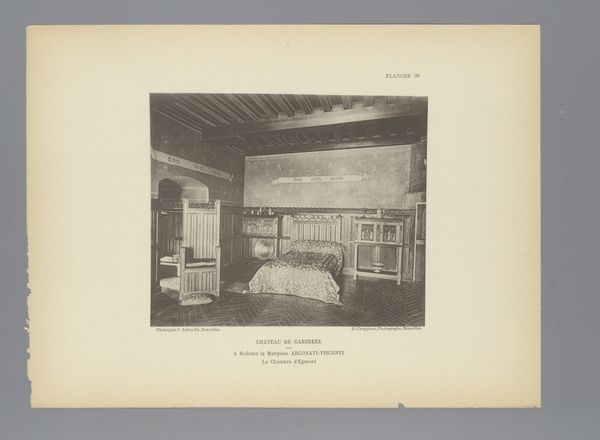
Interieur van het laboratorium van George Gill Green voor Green's August Flower en Dr. Boschee's German Syrup in Woodbury before 1889
0:00
0:00
photography, gelatin-silver-print
#
photography
#
gelatin-silver-print
#
realism
Dimensions: height 135 mm, width 185 mm
Copyright: Rijks Museum: Open Domain
Curator: An intriguing image. It’s a gelatin silver print of George Gill Green’s laboratory, taken before 1889. It’s an interior view. Editor: My first thought? This almost sterile depiction lacks all the messy materiality I associate with "the lab." It feels staged—devoid of true labour. Curator: True, yet perhaps there is an attempt to show a utopian side to industrialized medicine? Observe how the architecture suggests aspiration, a temple to health rather than a place for simply churning out product. Editor: Perhaps. But for me, the gelatin-silver print process is central here. It was revolutionary for its time, enabling mass reproduction. We see it being used here not to elevate art but to promote Green's concoctions. How does this impact labour? What processes enabled Green's project of wealth accumulation, by means of medicine-making? Curator: And the scale. The sheer scale speaks to an empire of patent medicine. The bottles gleaming under the chandeliers, promising cures, promising life—though their efficacy remains a big question mark! It is both visually grandiose and emotionally haunting, capturing that Victorian-era faith in science. The chandeliers suggest light and hope, despite how they darken the negative, with little reflected in this room, suggesting medicine’s real use here. Editor: And don't forget what is missing in this photograph, the material and bodily resources which fuel it: The farms growing and distributing products, and especially, its patients; consumers turned workers whose hopes this scene turns a blind eye to. Without them, there would be no office here, lit though it may be by a massive chandelier. Curator: Indeed. A curious convergence of capital and faith, forever immortalized in silver halide. It’s funny, seeing industry staged like theatre. The photograph’s own status, an object of medicine, feels a fitting commentary of industry and exploitation. Editor: Absolutely, let’s try to use such moments to uncover stories from medicine’s own patients too. It shows that every print comes from people: Their work and health become materials to manufacture.
Comments
No comments
Be the first to comment and join the conversation on the ultimate creative platform.
